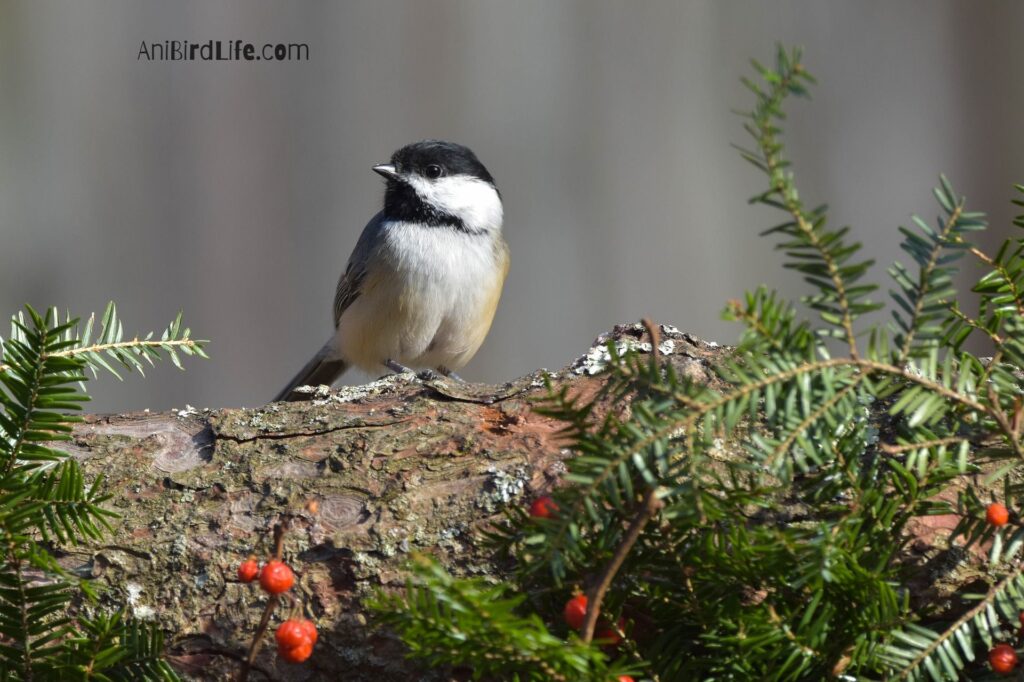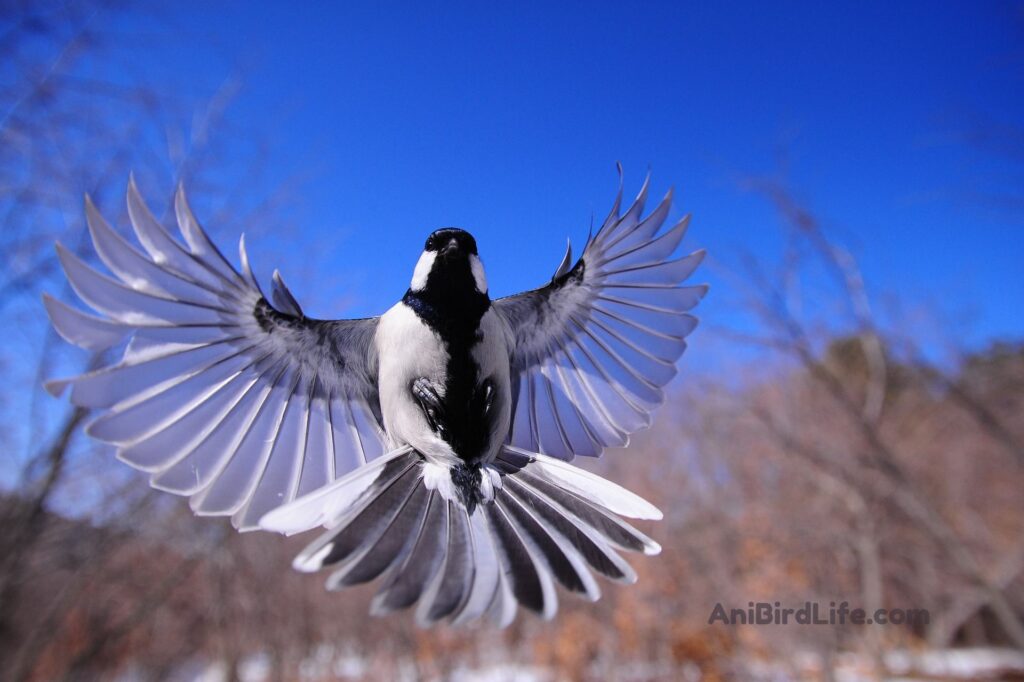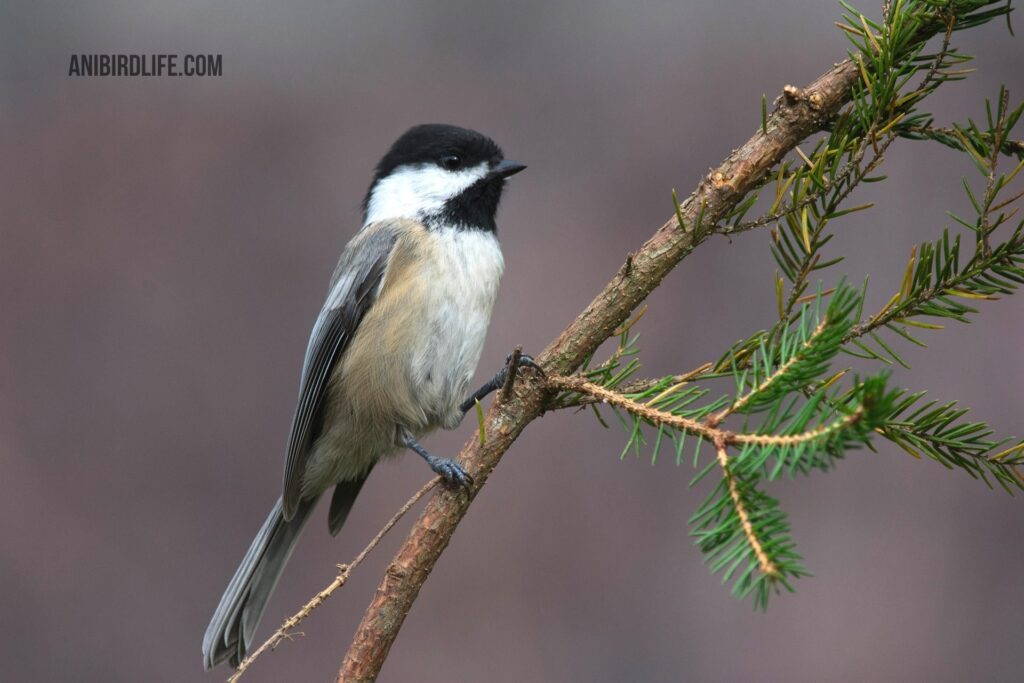The Black-capped Chickadee stands out as one of North America’s most charming birds. Its distinctive black cap and vibrant personality make it a favorite among birdwatchers and nature enthusiasts alike. This small songbird is known for its curious nature and distinct “chick-a-dee-dee-dee” call, making it a delightful addition to any outdoor setting.
These birds are not only engaging to observe but also play a vital role in their ecosystems. They help manage insect populations and spread seeds, which supports the health of their habitats. Their adaptability to various environments allows them to thrive in forests, backyards, and parks across the continent.
For those interested in attracting Black-capped Chickadees to their gardens, providing feeders with sunflower seeds or suet can bring these delightful creatures closer to home. As they interact with their surroundings and each other, they reveal fascinating behaviors that can enrich any natural experience.
Species Overview
The Black-capped Chickadee is a small songbird known for its distinctive appearance and vocalizations. Understanding its taxonomy, physical features, and habitat helps in appreciating this common yet fascinating species.
Taxonomy and Classification
The Black-capped Chickadee (Poecile atricapillus) belongs to the family Paridae, which includes other small songbirds. This species belongs to the order Passeriformes, commonly known as perching birds. Its closest relatives are the Mountain Chickadee and the Carolina Chickadee.
The genus name, Poecile, is derived from Greek, meaning “varied,” which references the diverse plumage found in its relatives. The species name, atricapillus, combines Latin words meaning “black” and “cap,” highlighting the bird’s notable head coloration.
Physical Characteristics
The Black-capped Chickadee measures about 4.7 to 5.9 inches in length and weighs approximately 0.3 to 0.4 ounces. Its plumage includes a black cap and throat, white cheeks, and soft grayish-brown wings and back.
The belly is predominantly white with a slight buff coloration. These birds possess short, stout bills suited for their diet of insects, seeds, and berries. They exhibit a unique behavior of storing food, which helps them survive harsh winter months.

Distribution and Habitat
The Black-capped Chickadee is commonly found across Canada and the northern United States. Its range extends southward to parts of the central United States, allowing it to inhabit various environments.
These birds thrive in deciduous and mixed forests, as well as suburban areas with sufficient trees. They prefer habitats that offer ample cover and nesting sites, often choosing tree cavities or nest boxes. Chickadees are adaptable, making them a familiar sight in parks and residential areas.
Behavior
The behavior of the Black-capped Chickadee reflects its adaptability and social nature. This section discusses their social structure, communication methods, reproduction, and feeding habits, which are essential to their survival and interaction.
Social Structure
Black-capped Chickadees often form small flocks, especially during winter. A typical flock consists of 5 to 15 birds. These groups demonstrate strong social bonds, frequently engaging in mutual preening and foraging together.
Hierarchy exists within these flocks. Dominant individuals may have priority access to food resources and mates. These interactions help maintain group cohesion, which can be crucial during harsh winter months.
Flocks may also include a mix of age and sex, promoting genetic diversity. Younger birds learn essential survival skills from adults, enhancing their chances of thriving in changing environments.
Communication and Vocalizations
Communication among Black-capped Chickadees primarily occurs through vocalizations. They are known for their distinctive “chick-a-dee-dee-dee” call, which varies in intensity according to the level of threat from predators.
Additionally, their calls serve multiple purposes. For example, simpler calls might convey basic information, while more complex sequences can signal alarms or coordinate group movement.
Visual signals, such as body posture and feather displays, also play a role in communication. These visual cues, combined with vocalizations, create a robust system crucial for social interaction and survival.

Reproduction and Life Cycle
Black-capped Chickadees usually start nesting from late March to early April. They often select tree cavities or artificial nest boxes, depending on availability. The female typically lays 2 to 10 eggs, which she incubates for about 12 to 13 days.
Both parents are involved in feeding the chicks. Once hatched, the fledglings typically leave the nest within 16 to 24 days. Even after they fledge, they still depend on their parents for food and protection. The availability of nesting sites and parental care is crucial for maintaining population stability. Successful reproduction depends on environmental conditions, predation, and food availability during the breeding season.
Feeding Habits
Black-capped Chickadees have a diverse diet, feeding on insects, seeds, and berries. They are particularly known for their ability to store food, hiding seeds in crevices and beneath tree bark to retrieve later.
They have a foraging strategy tailored to their environment. Chickadees often hang upside down while searching for food, an ability that helps them access hard-to-reach areas.
In winter, they utilize their caches efficiently, providing sustenance when food is scarce. Their adaptability in feeding habits allows them to thrive in diverse habitats, from forests to urban areas.
Conservation
Efforts to conserve the Black-capped Chickadee focus on understanding its population dynamics and addressing the threats it faces in its habitat. This species requires specific conservation strategies to remain stable in changing environments.
Population Status
The Black-capped Chickadee is classified as a species of least concern due to its widespread distribution across North America. Recent estimates suggest a stable population of about 6 million individuals. Nesting success varies regionally, with factors like habitat quality and food availability impacting reproductive success. Although their numbers fluctuate in localized areas, overall trends indicate a resilience to various environmental changes.
Threats and Challenges
Several threats challenge the Black-capped Chickadee’s survival. Habitat loss due to urbanization, logging, and agricultural expansion remains significant. Furthermore, climate change poses a growing risk, as altered weather patterns affect food sources and breeding schedules.
Predation from cats and other urban wildlife also impacts chickadee populations. Conservation strategies must focus on habitat protection, public awareness campaigns, and maintaining biodiversity to ensure the long-term survival of this bird.

Research
Research on the Black-capped Chickadee highlights its cognitive abilities and adaptability in various environments. Studies provide insights into their behavior, intelligence, and how they thrive alongside human development.
Studies on Cognition
Research indicates that the Black-capped Chickadee exhibits advanced cognitive skills, particularly in memory and problem-solving. Notably, they can remember the locations of food caches, crucial for survival during harsh winters.
Experiments have shown these birds possess the ability to adapt their foraging strategies based on the presence of competitors. Additionally, they communicate effectively through a variety of vocalizations, which convey information about danger and food sources. This social behavior enhances their survival and adaptability in changing environments.
Adaptation to Urban Environments
The Black-capped Chickadee has successfully adapted to urban settings, demonstrating its resilience. Studies reveal that these birds often thrive in parks and residential areas with ample food sources.
Their ability to modify feeding habits is significant. Chickadees readily exploit human-provided feeders and adjust their foraging techniques to include diverse food items. Behavioral changes, such as increased boldness when foraging near humans, also contribute to their success in urban spaces. This adaptability showcases the species’ remarkable resourcefulness in evolving environments.
Interaction with Humans
Black-capped Chickadees often engage positively with human activities, particularly through feeding and cultural interactions. They are known for their friendly behavior and adaptability, which has led to a unique relationship with people.
Bird Feeding and Observation
Black-capped Chickadees are regular visitors to feeders, drawn to a variety of seeds, especially sunflower seeds and peanuts. Due to their inquisitive nature, they often approach bird feeders where people are present, providing a great opportunity for observation.
Many enthusiasts enjoy hand-feeding these birds. They readily take seeds from a person’s palm, showcasing their friendly demeanor. Feeding them encourages repeated visits and fosters a connection between birds and humans in backyards and parks.
Chickadees also demonstrate interesting behaviors while feeding, such as caching seeds for later consumption. Observers can witness these behaviors, contributing to a greater understanding of their habits and intelligence.
Cultural Significance
The Black-capped Chickadee holds a special place in various cultures, particularly in North America. It is often celebrated for its distinctive call, which sounds like “chick-a-dee-dee-dee,” a vocalization that contributes to its name and recognition.
It is a state bird for several regions, including Massachusetts and Maine, symbolizing the natural beauty and biodiversity of these areas. Additionally, this bird inspires various forms of art, literature, and education, signaling its prominence in local cultures.
School programs often use the Black-capped Chickadee to teach about avian life and environmental conservation. These interactions encourage stewardship of natural habitats, promoting awareness and protection for birds and their ecosystems.
Frequently Asked Questions
This section addresses common inquiries regarding the Black-capped Chickadee, including identification, habitat preferences, behaviors, vocalizations, physical characteristics, and sexual dimorphism. Each question provides specific information to enhance understanding of this interesting bird species.
How can you differentiate between a Black-capped Chickadee and a Carolina Chickadee?
The Black-capped Chickadee has a distinct black cap and bib, with white cheeks and gray wings. The Carolina Chickadee, in contrast, is slightly smaller and has a more prominent white wing patch. The vocalizations of the two species can also aid in identification, with the Black-capped Chickadee having a “fee-bee” call.
What type of habitat do Black-capped Chickadees prefer?
Black-capped Chickadees thrive in mixed forests, coniferous woodlands, and shrubby areas. They are frequently found in deciduous forests as well, often near water sources. These birds are adaptable and can often be spotted in suburban areas and parks as well.
What are some interesting facts about Black-capped Chickadee behavior?
Black-capped Chickadees are known for their curious nature and exceptional memory. They use vocalizations to communicate and alert each other to potential threats. Additionally, they display behaviors like caching food to prepare for winter.
What does the song of a Black-capped Chickadee sound like?
The song of a Black-capped Chickadee consists of a distinctive “chick-a-dee-dee-dee” call, which varies in intensity based on the level of threat perceived. The “dee” notes increase in number with greater danger, serving as an alert to other birds.
What are the size and weight measurements for an average Black-capped Chickadee?
An average Black-capped Chickadee measures approximately 12 to 15 centimeters in length. Their weight typically ranges from 9 to 14 grams. Their small size enables them to maneuver effortlessly through thick vegetation.
What features distinguish female and male Black-capped Chickadees from each other?
Male and female Black-capped Chickadees share similar physical characteristics, with no significant differences in plumage color. However, males may be slightly larger on average. Behavioral displays, especially during mating seasons, often highlight the differences in their roles.
